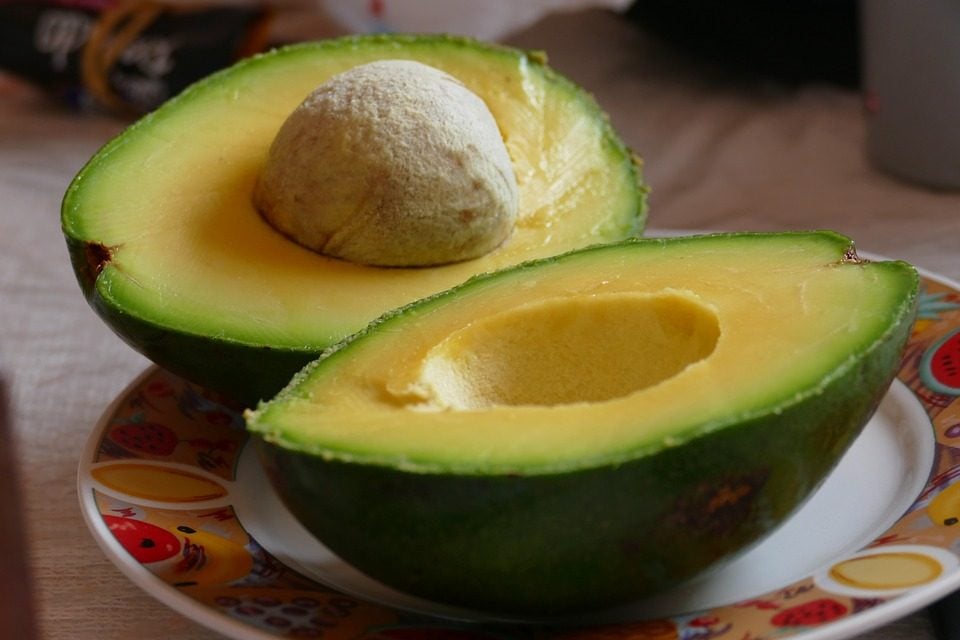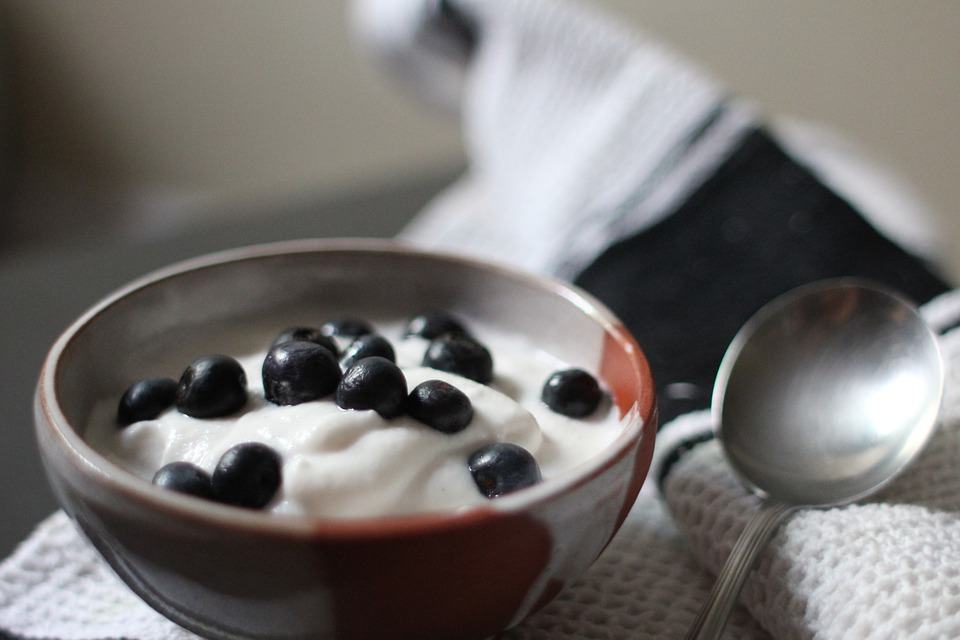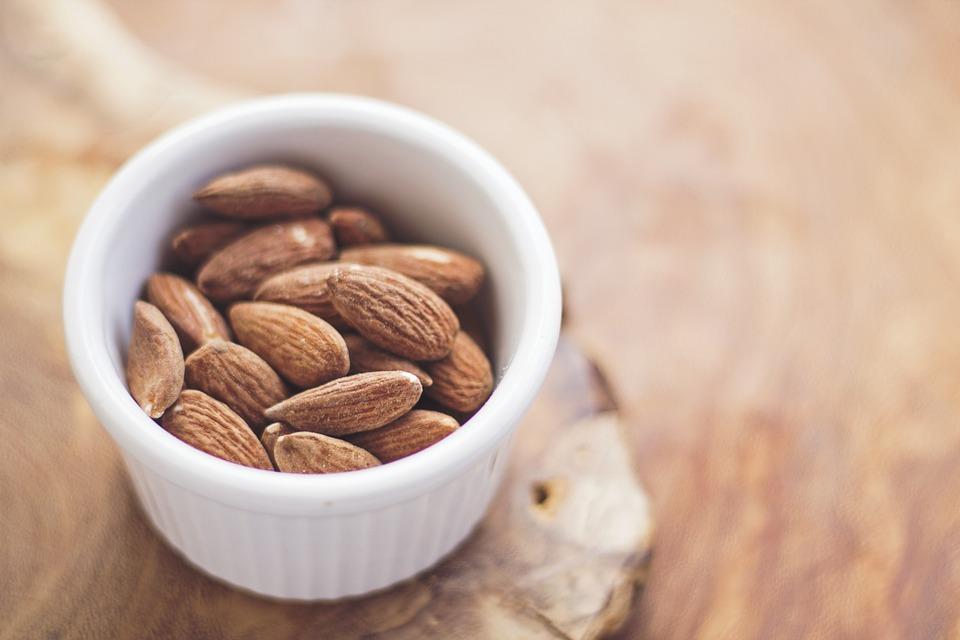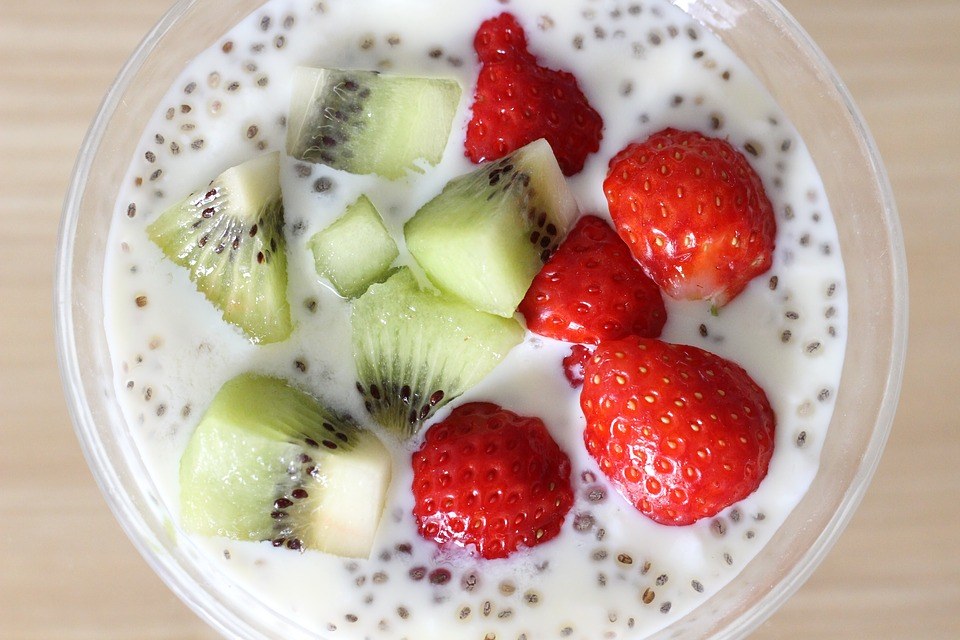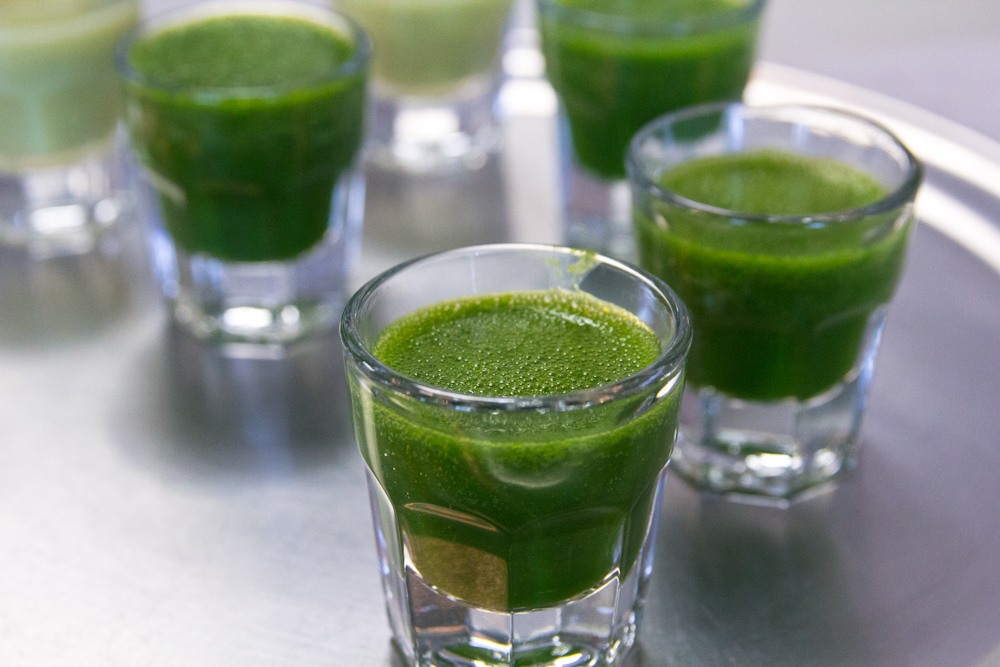Start With These Tips to Lower Blood Sugar Levels
To help you get started on filling your plate with more blood sugar friendly foods that will help lower your blood sugar, start by removing refined sugar, refined grains, and most processed foods from your diet. Processed foods (and especially fast food) all contain chemicals and refined ingredients that our bodies don’t recognize as real nutrients, so our cells never really get what they need and we feel hungry all the time as a result. This also leads to blood sugar swings and spikes that cause insulin to work less efficiently. What helps insulin work best so that blood sugar stays in a stable place are foods that pack dense amounts of nutrition and contain amino acids (that form protein in the body), fiber (which is the best source of carbohydrates), and healthy fats from real food. Let’s check out some foods that can help lower blood sugar levels by offering us these nutritional benefits, shall we?
1. Spinach
Spinach is high in amino acids and actually has 5 grams of protein per cup. Spinach is also a rich source of the minerals calcium, magnesium, and potassium which all lower blood pressure levels, and it is a good source of fiber to help lower blood sugar. Fiber, protein and minerals are three wonderful components that help balance insulin levels and help the body feel more nourished. Add spinach to your smoothies, salads, entrees, and remember that while kale is fantastic, spinach offers more overall nutrients per cup than any other green!
2. Avocado
Avocados are a superfood for so many reasons, but they’re especially great to lower blood sugar levels. The avocado fruit is a rich source of monounsaturated fats which are the best type of fats for your heart. Avocado is also a good source of fiber, amino acids, B vitamins, minerals such as magnesium and potassium, and it’s a great replacement to foods such as mayo and cheese—especially for those with diabetes or food intolerances. Chop some avocado into your next smoothie for a creamy texture, add it to a salad, use it in place of mayo or cheese, or feel free to add it to your next omelet. Used in moderation and in place of processed fats, this fruit can be an amazing addition to your diet.
3. Eggs
Eggs have had a bad reputation for years, but the truth is they can be a very valuable part of a balanced diet and are a wonderful source of meatless protein, healthy fats, and vitamins such as vitamin B12 and vitamin D. The key is to consume them in moderation (no more than a couple a day), and to buy the highest quality eggs possible such as pastured, organic and non-GMO eggs. Eggs work to lower blood sugar levels very well because they are generally very easy to digest so that nutrients reach the cells quickly and help lower blood sugar levels as a result. Keep some hard-boiled eggs in your fridge and have one when your blood sugar feels too high or stops to drop. You can also include eggs at breakfast, lunch, or dinner for lower blood sugar levels throughout the day. Egg whites can also be paired with one or two whole eggs for more protein without overdoing the fat from whole eggs.
4. Broccoli
Broccoli is packed with benefits that lower blood sugar levels. First, it’s a great source of fiber that slows down the release of sugar from foods into our cells. Even if we’re not eating sugar directly, everything we consume is eventually turned into glucose that our bodies use to energize us. However, it’s best to eat foods that turn into glucose slowly so that we get a steady release all the time and not intense swings that we get from eating sweets or junk food. Fiber is a key to maintaining healthy blood sugar levels all the time as well as digestion and assimilation of nutrients. No need to nosh on broccoli raw or eat like a rabbit; have broccoli whatever way you enjoy whether that be roasted, steamed with spices and your favorite source of protein, use it in a stir-fry with lean protein, broth and some other veggies, or sauté it to have with your regular dinner. It can also be added to salads and is one of the most affordable and nutritious vegetables available all year round.
5. Plain, Non-fat Greek Yogurt
Plain, non-fat Greek yogurt is an excellent source of protein, calcium, magnesium, and potassium. Of course, if you are dairy intolerant or vegan, Greek yogurt isn’t for you, but if you’re incorporating dairy into your diet, high-quality sources can serve as an excellent source of protein in place of fatty cuts of meat or processed sources. Greek yogurt’s nutrients lower blood sugar levels as well as satiate appetite very quickly. Purchase from non-GMO and organic sources whenever possible for the best quality, and avoid yogurt products with added hormones or antibiotics as well as any that have added sugars or artificial ingredients. You can use Greek yogurt in place of milk in a smoothie, in place of sour cream for less fat in dips and dressings, or use it as a base for sandwiches instead of mayo. It can also make a wonderful dessert with berries and can be frozen for an hour to serve as a more ice-cream like treat at night. If the taste is too sour for your liking, feel free to add some stevia to sweeten it up without any added sugar.
6. Almonds
Almonds offer more protein than other types of nuts as well as more fiber and overall nutrition. This makes them an excellent choice for lowering blood sugar levels and even blood pressure levels too. Almonds include 7 grams of protein, 3 grams of fiber, and only 1 gram of naturally occurring sugar per ounce. They are also packed with magnesium and potassium that help lower blood sugar and blood pressure levels. Almonds even offer a little calcium, iron and zinc too! One ounce of almonds is equal to about 22 nuts and makes the perfect serving size as a snack throughout the day. You can also add slivered almonds to meals like salads, stir-fries and even oatmeal if you wish. Or, pair it with some of that Greek yogurt mentioned above for a filling snack or light breakfast.
7. Chia Seeds
Chia seeds are tiny in size, but they offer big benefits that you won’t want to miss out on! Chia is a great source of amino acids that provides protein, fiber which lowers blood sugar levels, and nutrients such as magnesium, calcium and iron. Chia seeds are also rich in omega-3 fats that our hearts and metabolisms need to stay healthy. These same fats also fuel our brains and help us feel more balanced throughout the day. Another benefit of chia is that it’s so easy to incorporate into your meals because it is tasteless, yet it helps thicken up anything it’s added to once it sets for a bit. Because of its gel-like consistency, chia is fun to add to oatmeal and smoothies, or you can even include it in your salad dressings and soups.
8. Wheatgrass
Though it doesn’t sound very appealing, wheatgrass is actually a bit sweet and one of the most power-packed foods you can eat for better blood sugar levels as well as detoxification and digestion. Wheatgrass is also gluten-free because it comes from a grass and not the actual grain that wheat is made from. It is a rich source of amino acids, fiber, vitamins, minerals, and chlorophyll, the pigment that makes it so beautifully green in color. Chlorophyll is one of the most overlooked nutrients for lowering blood sugar levels quickly and is found in densely green foods. Wheatgrass can be consumed as a shot, used in the form of wheatgrass juice powder, or can be bought whole at any health food store and juiced or used in smoothies. I find that a greens powder made with raw and organic wheatgrass juice is the easiest and tastiest way to use it, but many people enjoy using the whole wheatgrass in their daily routines. Whatever way you choose to use wheatgrass, don’t give up on it the first time you try it. It can be an amazing food to lower your blood sugar levels as well as improve your overall diet, hair, and even skin appearance too.
9. Wild Fish
Wild fish is packed with health benefits including lean protein, iron, healthy fats, and B vitamins along with minerals like magnesium and potassium. Fish is a great food to lower blood sugar levels because of its overall nutrition, but remember to purchase lean options like wild salmon, tilapia, halibut, tuna, and avoid those that are fried or coated in breadcrumbs or high amounts of oil. It’s also very important to choose wild fish over farmed to avoid toxic pollutants, mercury, and pesticides. Fish can be consumed for lunch or dinner, and if you’re into savory breakfast, it even makes a great part of omelets or served over greens. Or bake it, chill it, and use it to make salmon or tuna salad!
10. Lentils
Lentils are packed with lean protein, iron, potassium, and fiber which makes them an overall incredible food to lower blood sugar levels. Lentils are also a good source of antioxidants, are very affordable, and offer a creamy and nutty texture that makes them delicious. One of the biggest benefits of these legumes is that they don’t have to be soaked or cooked a long time like beans and some other dried legumes do. Lentils can be cooked in only 20 minutes without any soaking, and red split lentils cook in about 15 minutes. The red ones tend to be sweeter while the other colors are more nutty, so choose whichever variety you enjoy. Lentils can be used in soups, stews, added to salads and make a fantastic replacement to meat for a vegetarian/vegan option. If you’re not into beans or don’t like them, give lentils a try. They are a phenomenal food to lower blood sugar levels because they take a long time to digest but pack big amounts of nutrition.
Final Tips to Lower Blood Sugar Levels
While diet is important to manage blood sugar levels, so is overall lifestyle. Adequate sleep, enough water intake, and getting movement each day are all important factors that can promote lower blood sugar levels around the clock. Some people find that eating several times a day works better for them while others find they do best with three larger meals throughout the day. Test out both to see which works for you, and listen to your body. Prioritize eating real foods with a balanced intake of protein, fiber, and healthy fats throughout the day for overall healthier blood sugar levels as much as possible. Other foods worth mentioning for lower blood sugar levels are coconut butter, dark chocolate, cinnamon, apple cider vinegar, other nuts and seeds, most all vegetables, greens, fiber-rich fruits like berries and apples, and even black coffee. Remember, there’s no need to deprive yourself when taking care of your body but choosing high-quality, real foods is key. For more information, check out these tips so you can be on your way to better blood sugar levels in no time! Featured photo credit: AnastasiaKopa via shutterstock.com

